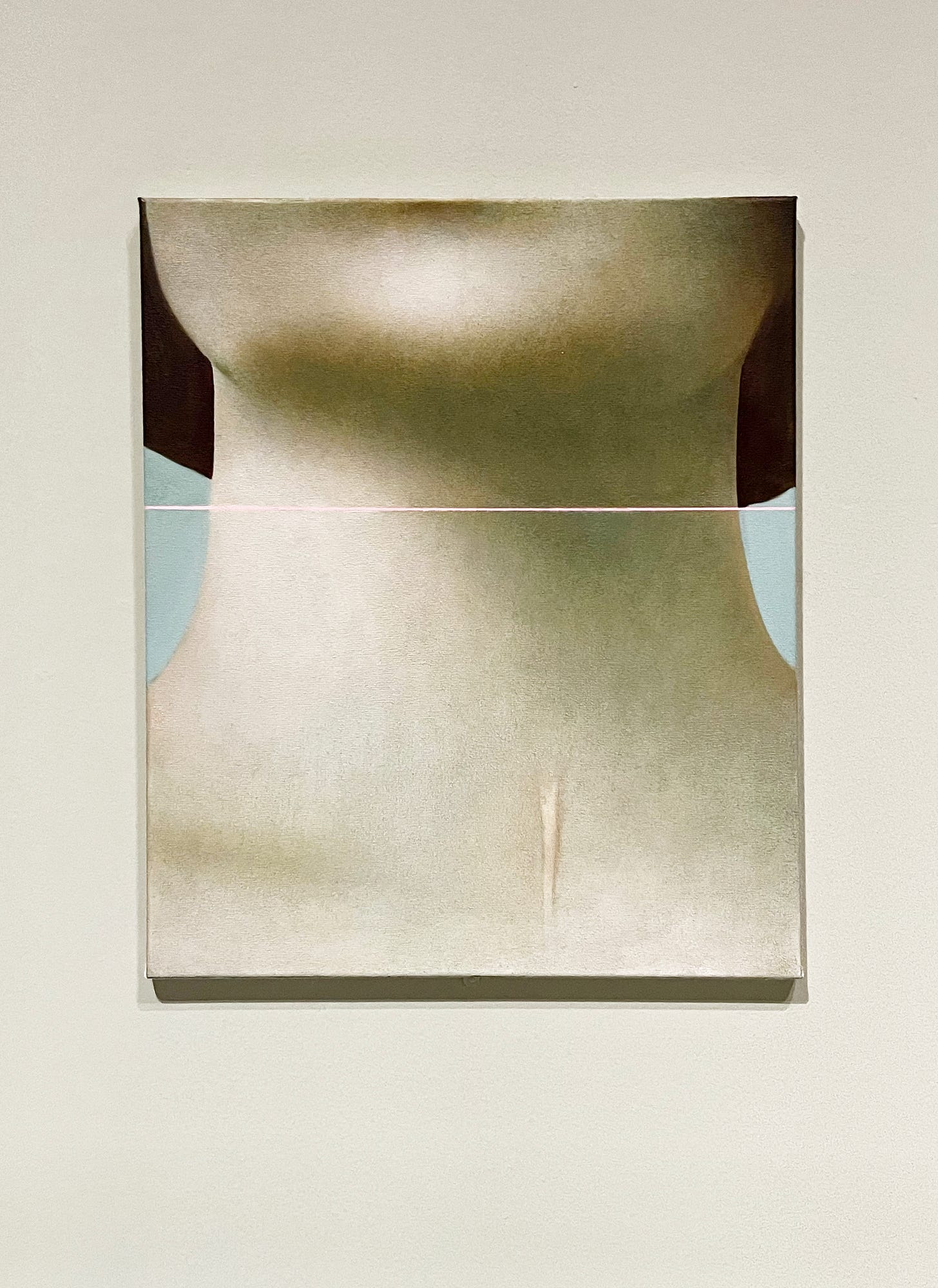Louise Giovanelli and other Cleopatri
Ten things to get your week started in the most fabulous way.
Hello hello
It’s been a while, hasn’t it? I took a break over Christmas and kind of forgot to stop breaking. Anyway, I’m back now. Without further ado, let’s embrace the awesome potential of computers and slap some hyperlinks!
I’m utterly furious I can’t get to Louise Giovanelli’s solo exhibition at GRIMM in New York this Summer. I saw one of her Marker series at Manchester Art Gallery recently and kind of fell in love with it. The seven paintings are all based on a 1962 Bert Stern shot of Elizabeth Taylor as Cleopatra, showing off the scar from the emergency tracheotomy she received after contracting pneumonia while making the film. I love learning obscure film trivia in art galleries.
Wikitok is my new favourite distraction. It’s basically a continuous TikTok format that serves up endless random Wikipedia articles and oh boy it is ADDICTIVE. I’ve added it to my home screen as an app, and it’s a great way to scroll away a few moments. It was created by developer Isaac Gemal in ninety minutes, which is all kinds of ridiculous. I particularly like the fact he’s kept it genuinely random – “I have no grand plans for some sort of insane monetized hyper-calculating TikTok algorithm … It is anti-algorithmic, if anything” – which makes it even more startling how certain topics appear over and over again. For example, it would appear that the majority of human knowledge revolves around defining species of beetle.
Typewriters, stinky carpets and crazy press trips – what it was like working on video game mags in the 1980s. The description of the elaborate method for taking screenshots is hilariously archaic. See also: why old games magazines are a vital source of cultural history.
Having discovered there’s a deluxe limited edition tenth anniversary version of ND Stevenson’s Nimona coming out in May, I watched the wonderful film yet again. I was always disappointed they never got around to publishing a making-of book – but upon further googlage, it turns out they kind of did! Put together by the film’s production designer Aidan Sugano, The Art of Nimona is a 360-page, entirely free PDF. It’s a thorough exploration of how they developed the film’s distinctive look, described by Sugano as a blend of Syd Mead, Eyvind Earle and Charley Harper. And Stevenson’s introduction highlights the chaos that is essential to creation:
Nimona was pink because I could only find a pink pen the day I started sketching her. She lived in a medieval future because I liked drawing knights but not horses, laser cannons but not spaceships. Her first transformation was going to be into a T. rex, but sharks were easier to draw; and the shark had boobs because it was 5 a.m. and my life was falling apart and that meant it was objectively the funniest joke in the world. Even her name just kind of … happened, a result of writing down the first syllables that came to mind and telling myself I'd come up with a real name later.
From the Domesday Book to Wingdings – the secret history of the manicule, the little hand that’s everywhere.
That time a film crew dropped 250,000 bouncy balls on San Francisco. Twenty years later, Fallon London’s advert for Sony Bravia is still absolutely astounding.
Recent readings: Michael Cragg’s Reach for the Stars and Miranda Sawyer’s Uncommon People are fantastic explorations of British pop from the nineties and noughties, the last hurrah of pre-streaming music. Wonderful nostalgia for anyone raised on Smash Hits and Select. Bouncing back and forth between 1890s architecture and gripping, horrible true crime, Erik Larson’s The Devil in the White City may be my dream book. And having now fallen in love with two adaptations, I’ve finally sunk my teeth into Patricia Highsmith’s The Talented Mr Ripley, and it does not disappoint.
iPods, washing machines, pregnancy tests – it turns out you can play Doom on anything.
Not all borrowing is the same. From public domain illustrations on book covers to AI’s data hoarding, who really owns culture – and who gets away with taking it? Elizabeth Goodspeed on what happens when we treat the past like a stock library.
I’ve made my first ever Wikipedia edit! After a bit of lunchtime detective work and intense reverse image searching, I learnt that the image on the cover of Blur’s Blur is by American photographer Scott Goldsmith, licensed by designers Yacht Associates as a stock photo. The internet’s brain has been updated accordingly. I reached out to Goldsmith for more details and he kindly gave me a little background:
I was on an assignment at a Pittsburgh hospital … my camera was mounted on a tripod down a long hall when I noticed the gurney rolling by. I happened to be at a low shutter speed and I instinctively started to shoot. It was a nice surprise when the film was processed.
For my next trick, I want to identify the model on the cover of Leisure. If anyone has any information about the original Picture Post article on swimming hats – “Glamour in the Swim”, shot by Charles Hewitt in 1954 – let me know!
That is all.





British evolutionary biologist and geneticist J. B. S. Haldane said that if God existed, and had made all of Creation, he must have an “inordinate fondness for beetles.”